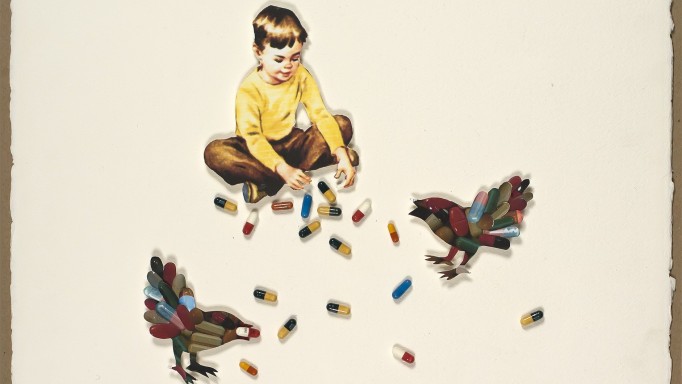Syphilis is a sexually transmitted infection caused by Treponema pallidum bacteria. It can be cured with antibiotics, but if left untreated, it can cause severe complications, including heart problems, neurological damage and death. Gay and bisexual men have a high rate of syphilis compared with the general population, accounting for about 40% of all cases in the United States. But rates are increasing among heterosexual men and women as well, and congenital syphilis in newborn babies is also on the rise.
How is syphilis transmitted?
Syphilis is usually passed from person to person through direct contact with active sores, most often during vaginal, anal or oral sex or by sharing sex toys. Transmission is more likely to occur during the primary and secondary stages of syphilis. Pregnant people with syphilis can pass it on to their babies during gestation or delivery. Syphilis is not transmitted through contact with objects such as toilet seats, clothing or eating utensils.
How can syphilis be prevented?
Avoid contact with sores during sex, and avoid having sex if you have active lesions. Syphilis bacteria are present semen and vaginal fluid. Condoms can reduce the risk for infection, but they are not fully protective because sores can occur in areas not covered by a condom. Recent research shows that taking doxycycline as post-exposure prophylaxis after sex—known as doxy PEP—can reduce the risk for syphilis in people at high risk.
What are the symptoms of syphilis?
Syphilis has been dubbed the “great imitator” because its symptoms can resemble those of many other conditions. Distinct symptoms occur at different stages of the disease.
- Primary syphilis: Primary syphilis typically starts as an initial sore, known as a chancre, that usually develops within a few weeks after infection. Chancres most often appear on the penis, vulva, vagina, anus or mouth—the sites where the bacteria enter the body. Sometimes, more than one initial lesion may be present. Because the sores are typically painless, they may go unnoticed. The initial sore usually heals within three to six weeks without treatment, but the person remains infected.
- Secondary syphilis: If primary syphilis is not treated, it can progress to secondary syphilis, usually within several weeks after the initial chancre has healed. The most common symptom is pox-like lesions on the skin or mucous membranes; if clustered together, they may look like a rash. The sores can appear anywhere on the body, including the palms of the hands and soles of the feet. They usually are not painful or itchy. These lesions are highly contagious and can spread the bacteria if another person comes into contact with them. Other symptoms may include fever, swollen lymph nodes, sore throat, fatigue, hair loss, headache and muscle aches. These symptoms usually resolve within a few weeks or months with or without treatment, but the bacteria remain in the body.
- Latent syphilis: Latent, or inactive, syphilis is an asymptomatic stage that occurs after secondary syphilis. The latent stage, which can last for years, is divided into early latent (less than a year) or late latent (a year or more) infection. People with latent syphilis are unlikely to transmit the bacteria, but treatment is recommended to prevent serious late-stage complications.
- Tertiary syphilis: If left untreated, up to one third of people go on to develop tertiary syphilis 10 to 30 years after initial infection. The bacteria can damage organs throughout the body, including the brain, nerves, eyes, ears, heart, blood vessels, liver, bones and joints. Some people develop tumor-like growths known as gummas. Tertiary syphilis can lead to serious health problems and death.
- Neurosyphilis: Neurosyphilis occurs when the bacteria infect the brain and nervous system. Neurosyphilis, ocular syphilis (affecting the eyes) and otosyphilis (affecting the ears) can occur at any stage of infection. Neurological damage may lead to numbness, paralysis, blindness, deafness, cognitive impairment and dementia.
- Congenital syphilis: Congenital syphilis occurs when a mother passes the infection on to the baby during pregnancy or delivery. Congenital syphilis can cause miscarriages, stillbirth and premature birth. Many infants with congenital syphilis don’t have any symptoms at birth, but if left untreated, they can develop serious complications, including bone or teeth deformities, neurological problems, seizures, blindness and deafness.
Syphilis and HIV
About half of gay and bisexual men with primary and secondary syphilis in the United States are living with HIV. HIV-positive people with active syphilis lesions are more likely to transmit HIV, and HIV-negative people with syphilis sores are more likely to acquire the virus. Studies suggest that people living with HIV who contract syphilis—especially those with a low CD4 count—may develop more severe illness, are at greater risk for neurosyphilis and may not respond as well to treatment.
How is syphilis diagnosed?
Because syphilis can resemble other conditions, testing is necessary to make a definitive diagnosis. Get tested if you have symptoms suggestive of syphilis or if a sex partner has tested positive. The Centers for Disease Control and Prevention recommends regular testing for syphilis and other sexually transmitted infections—even if asymptomatic—for sexually active gay and bisexual men, people living with HIV and those using HIV pre-exposure prophylaxis (PrEP). All pregnant people should be tested for syphilis during their first prenatal visit.
Syphilis may be diagnosed using a blood test or a sample of fluid from lesions. The blood tests used for screening must be confirmed with a treponemal antibody test. It can take several weeks for antibodies to appear, and they usually remain detectable for life, even after successful treatment. If a person has had sex with someone who has syphilis, they may be treated preemptively before getting test results.
How is syphilis treated?
Syphilis can be treated at any stage, though treating it earlier reduces the risk of transmission and the likelihood of developing severe complications. The standard treatment is injectable benzathine penicillin. A single injection in the buttocks is usually all that’s needed to treat primary, secondary or early latent syphilis. However, people with HIV may require additional doses.
People with late latent syphilis, tertiary syphilis or syphilis of unknown duration should receive once-weekly penicillin injections for three weeks. Neurosyphilis and eye and ear manifestations require more intensive treatment, for example, frequent intravenous infusions of penicillin for up to two weeks or the alternative antibiotic ceftriaxone.
People who are allergic to penicillin may be able to safely use the drug after desensitization. Sometimes other antibiotics, including doxycycline and tetracycline, are used to treat syphilis, but these have not been as well studied. New therapies are under investigation, and a clinical trial might be an option. Visit ClinicalTrials.gov or ask your health care provider about open studies.
Follow-up blood tests should be done after syphilis treatment to ensure that it was successful. Antibiotic treatment can cure syphilis, but it might not reverse existing organ damage. Syphilis does not confer immunity, so it is possible to get it again.
Last Reviewed: February 13, 2023














